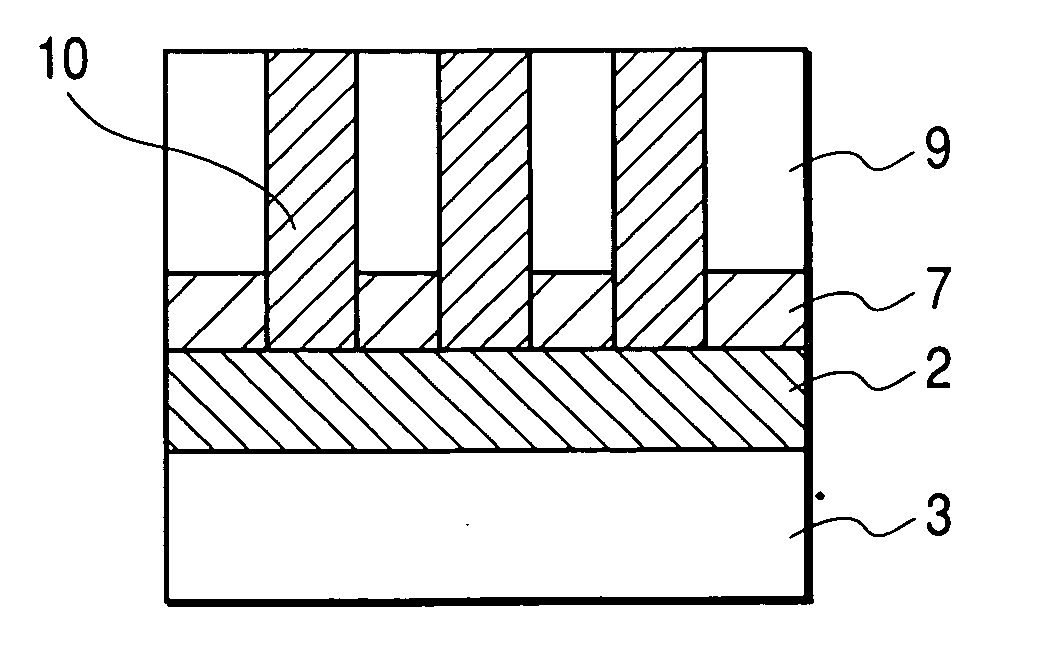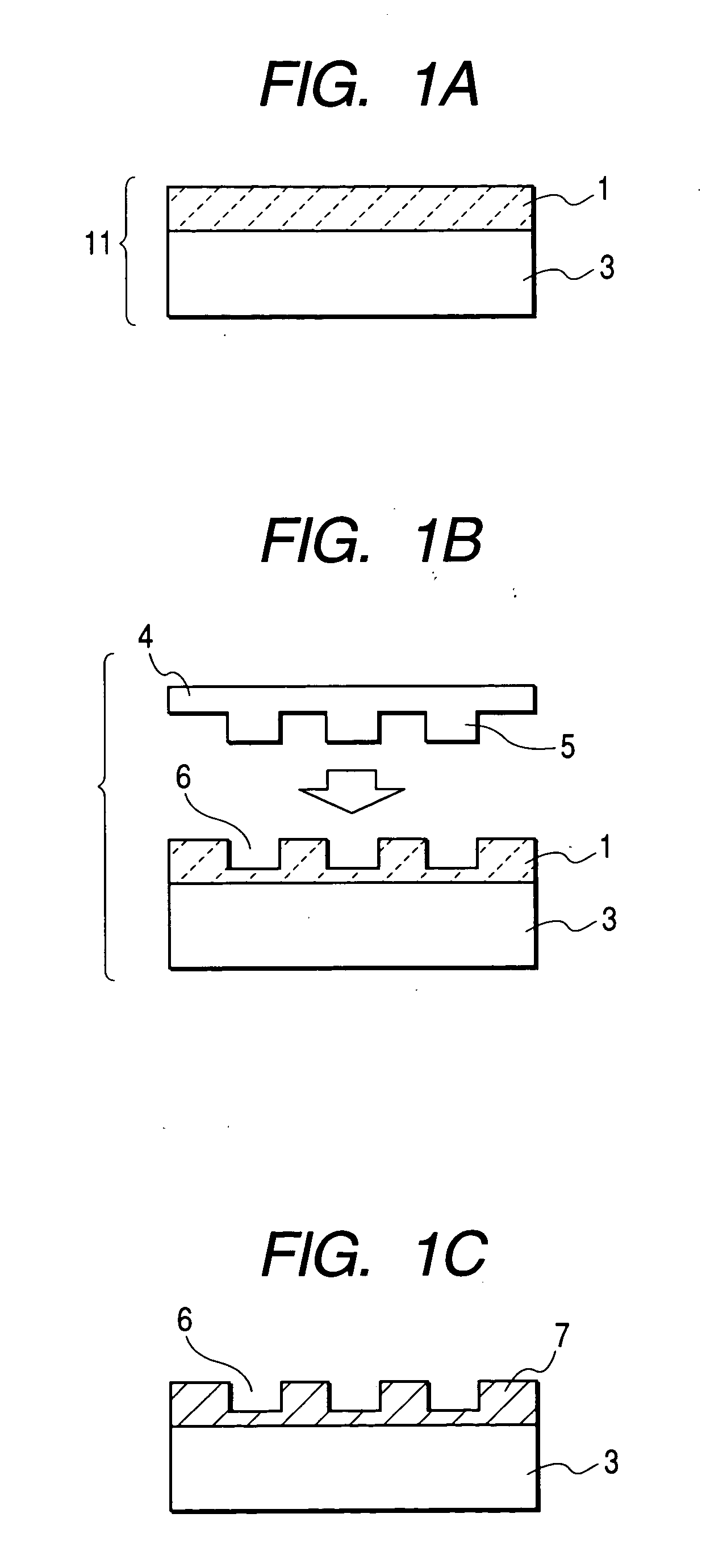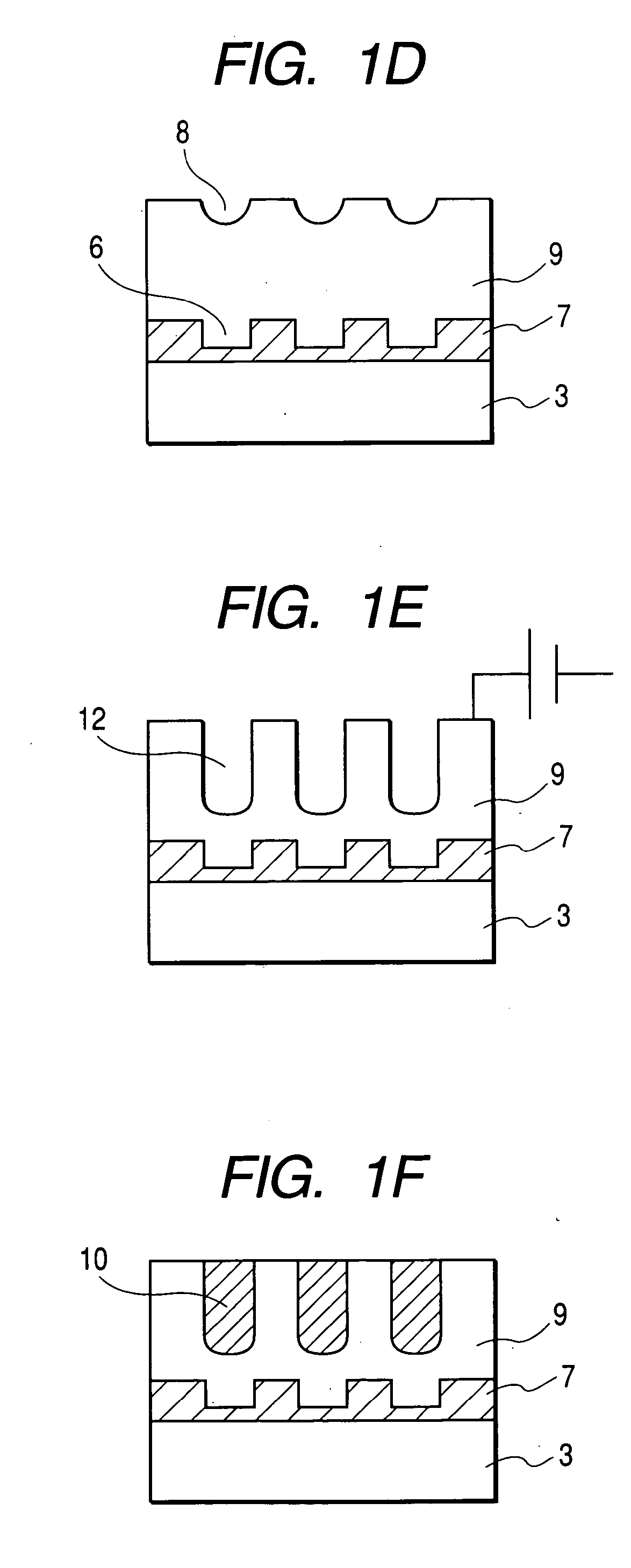Structure manufacturing method
- Summary
- Abstract
- Description
- Claims
- Application Information
AI Technical Summary
Problems solved by technology
Method used
Image
Examples
first embodiment
[0057] In this example, the invention is used.
[0058] As shown in FIGS. 1A, 1B, 1C, 1D, 1E and 1F, with the first embodiment of nano-structure manufacturing method, firstly a liquid application material 1 that contains silicon is applied onto a support substrate 3 to produce an object of processing 11 (step (1)). Then, a mold 4 having projection structures 5 with intervals of nanometers is pressed against the layer of the liquid material 1 that contains silicon to produce corresponding recess structures 6 (step (2)). Thereafter, the liquid material is baked in oxygen-containing gas or oxidized in ozone or oxygen plasma to make it electrically highly resistive (step (3)). Subsequently, a layer to be anodized 9 is formed on said oxidized liquid material (step (4)). Then, the layer to be anodized is actually anodized in an acidic solution (step (5)). Finally, fine holes that are aligned with the respective recess structures 6 are formed in the anodized layer 9.
[0059] For instance, as sh...
example 2
[0063] In this example, the second embodiment of the invention is used.
[0064] As shown in FIGS. 2A, 2B, 2C, 2D, 2E, 2F and 2G, with the second embodiment of nano-structure manufacturing method, firstly a liquid application material 1 that contains silicon is thinly applied onto an electro-conductive layer 2 (step (1)). Then, a mold 4 having projection structures 5 with intervals of nanometers is pressed against the layer of the applied liquid material 1 to produce corresponding recess structures 6 on the surface of the silicon-containing liquid material (step (2)). Thereafter, the silicon-containing liquid material is oxidized typically by means of baking so as to make it inorganic and come into an electrically highly resistive state 7 (step (3)). Then, the residue in the recess structures 6 of the silicon-containing liquid material is removed by etching to expose the electro-conductive layer 2 (step (6)). Then, a layer to be anodized 9 is formed on said oxidized insulator (step (4)...
example 3
[0069] In this example, the third embodiment of the invention is used.
[0070] As shown in FIGS. 3A, 3B, 3C, 3D, 3E, 3F and 3G, with the third embodiment of nano-structure manufacturing method, firstly a liquid application material 1 that contains silicon is applied onto an electro-conductive layer 2 (step (1)). Then, a mold 4 having projection structures 5 with intervals of nanometers is pressed against the layer of the applied liquid material 1 to produce corresponding recess structures 6 on the surface of the silicon-containing liquid material 1 (step (2)). Then, the electro-conductive layer 2 is exposed in the areas of the recess structures by etching (step (6')). Thereafter, the silicon-containing liquid material is oxidized by oxidation, which is typically baking (step (3'). Then, a layer 9 to be anodized is formed thereon (step (4)) and then actually anodized (step (7)) to produce nano-structures.
[0071] FIGS. 3A, 3B, 3C, 3D, 3E, 3F and 3G illustrate typical steps of the third e...
PUM
| Property | Measurement | Unit |
|---|---|---|
| Electrical conductor | aaaaa | aaaaa |
Abstract
Description
Claims
Application Information
 Login to View More
Login to View More - R&D
- Intellectual Property
- Life Sciences
- Materials
- Tech Scout
- Unparalleled Data Quality
- Higher Quality Content
- 60% Fewer Hallucinations
Browse by: Latest US Patents, China's latest patents, Technical Efficacy Thesaurus, Application Domain, Technology Topic, Popular Technical Reports.
© 2025 PatSnap. All rights reserved.Legal|Privacy policy|Modern Slavery Act Transparency Statement|Sitemap|About US| Contact US: help@patsnap.com



